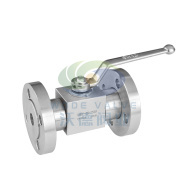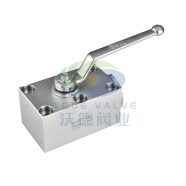News
Maximizing Durability and Longevity: Maintenance Tips for Wafer Check Valves
Time:
Feb 08,2025
Maximizing Durability and Longevity: Maintenance Tips for Wafer Check Valves
Table of Contents
1. Understanding Wafer Check Valves and Their Importance
2. Common Applications of Wafer Check Valves
3. Key Features That Enhance Longevity
3.1 Material Selection
3.2 Design Considerations
4. Regular Maintenance Practices for Wafer Check Valves
4.1 Visual Inspections
4.2 Cleaning Procedures
4.3 Lubrication Techniques
5. Troubleshooting Common Issues
5.1 Identifying Leaks
5.2 Addressing Noisy Operations
6. Advanced Maintenance Strategies
6.1 Predictive Maintenance Techniques
6.2 Utilization of Technology in Maintenance
7. Conclusion: Investing in the Longevity of Your Valves
8. FAQs About Wafer Check Valve Maintenance
1. Understanding Wafer Check Valves and Their Importance
Wafer check valves are pivotal components in various industrial systems, functioning primarily to prevent backflow in pipelines. These valves are engineered for durability and efficiency, making them suitable for applications in water treatment, oil and gas, and many other sectors. The design of wafer check valves allows for a streamlined flow, minimizing pressure drops and ensuring that systems run optimally. Maintaining these valves is crucial not only for their functionality but also for the overall sustainability of industrial operations.
2. Common Applications of Wafer Check Valves
Wafer check valves find utility across numerous industries. They are typically used in:
- **Water Supply and Treatment**: Ensuring unidirectional flow and preventing contamination.
- **Pumping Systems**: Protecting pumps from backflow that could cause damage.
- **HVAC Systems**: Maintaining proper flow directions in heating and cooling applications.
- **Chemical Processing**: Safeguarding against backflow of hazardous materials.
Each of these applications highlights the critical role that wafer check valves play in maintaining system integrity and efficiency.
3. Key Features That Enhance Longevity
To maximize the durability and lifespan of wafer check valves, it's vital to understand their key features.
3.1 Material Selection
The materials used in wafer check valves significantly impact their longevity. Common materials include stainless steel, bronze, and various plastics. Selecting the right material based on the application’s requirements—including temperature, pressure, and fluid type—is paramount. For instance, stainless steel valves are favored in corrosive environments due to their resistance to oxidation and rust.
3.2 Design Considerations
The design of the wafer check valve itself can dictate its durability. Features like a low profile, lightweight construction, and the absence of protruding parts minimize wear and tear, while an efficient seat design ensures a tight seal, preventing leaks and extending valve life.
4. Regular Maintenance Practices for Wafer Check Valves
Implementing a routine maintenance schedule is essential for ensuring the longevity of wafer check valves.
4.1 Visual Inspections
Regular visual inspections can reveal issues before they escalate. Inspect for signs of corrosion, leaks, or unusual wear on the valve body and seals. Early detection allows for timely interventions that can prevent costly failures.
4.2 Cleaning Procedures
Keeping the valve clean from debris and contaminants is vital. Use appropriate cleaning agents, and follow the manufacturer’s recommendations to avoid damaging materials. Cleaning should be performed as part of scheduled maintenance or immediately after any significant operational changes.
4.3 Lubrication Techniques
Proper lubrication reduces friction and wear on moving parts, thereby enhancing performance. Use lubricants that are compatible with the valve materials and the fluids being handled. Applying lubricant at the manufacturer-recommended intervals can significantly prolong the life of the valve.
5. Troubleshooting Common Issues
Even with regular maintenance, issues can arise. Knowing how to troubleshoot these problems is crucial.
5.1 Identifying Leaks
Leaking valves can lead to significant operational challenges. To identify leaks, conduct regular pressure tests and listen for peculiar sounds during operation. If a leak is detected, immediate action—such as tightening seals or replacing worn parts—is necessary to prevent further damage.
5.2 Addressing Noisy Operations
Noise can indicate problems such as cavitation or improper sizing. Ensure the valve is correctly sized for the application and check for obstructions that could cause turbulence. Sometimes, simply adjusting the installation or flow rate can alleviate noise issues.
6. Advanced Maintenance Strategies
To further enhance the durability of your wafer check valves, consider implementing advanced maintenance strategies.
6.1 Predictive Maintenance Techniques
Predictive maintenance involves monitoring the condition of the valve using sensors that track performance metrics. This data can predict failures before they occur, allowing for proactive maintenance that minimizes downtime.
6.2 Utilization of Technology in Maintenance
Adopting modern technology like IoT devices can streamline maintenance processes. Automated alerts for scheduled maintenance, remote monitoring capabilities, and data analytics can empower maintenance teams to make informed decisions, ensuring smoother operations.
7. Conclusion: Investing in the Longevity of Your Valves
Maximizing the durability and longevity of wafer check valves is a multifaceted endeavor that requires attention to detail, regular maintenance, and a proactive approach to potential issues. By understanding the importance of material selection, implementing routine inspections, and utilizing advanced maintenance strategies, industrial operators can significantly extend the life of their valves. Investing in these practices not only enhances operational efficiency but also protects the overall integrity of industrial systems.
8. FAQs About Wafer Check Valve Maintenance
1. How often should wafer check valves be inspected?
Regular inspections are recommended at least once a year, but the frequency may increase based on the operational conditions and manufacturer recommendations.
2. What are the common signs that a wafer check valve needs maintenance?
Common signs include leaks, unusual noises during operation, reduced flow rate, and visible corrosion or wear on the valve body.
3. Can wafer check valves be repaired, or should they be replaced?
In many cases, wafer check valves can be repaired by replacing seals or other worn components. However, if the damage is extensive, replacement may be more cost-effective.
4. What materials are best for wafer check valves in corrosive environments?
Stainless steel is often recommended for corrosive environments due to its excellent resistance to oxidation and rust. Other options include specialized alloys and coatings.
5. How can technology improve the maintenance of wafer check valves?
Technology can enhance maintenance through predictive analytics, remote monitoring, and automated alerts for scheduled maintenance, allowing for proactive decision-making and reduced downtime.
By adhering to these comprehensive maintenance tips and strategies, operators can ensure the functionality and longevity of their wafer check valves, ultimately leading to enhanced operational efficiency and reduced costs.
RELATED NEWS




